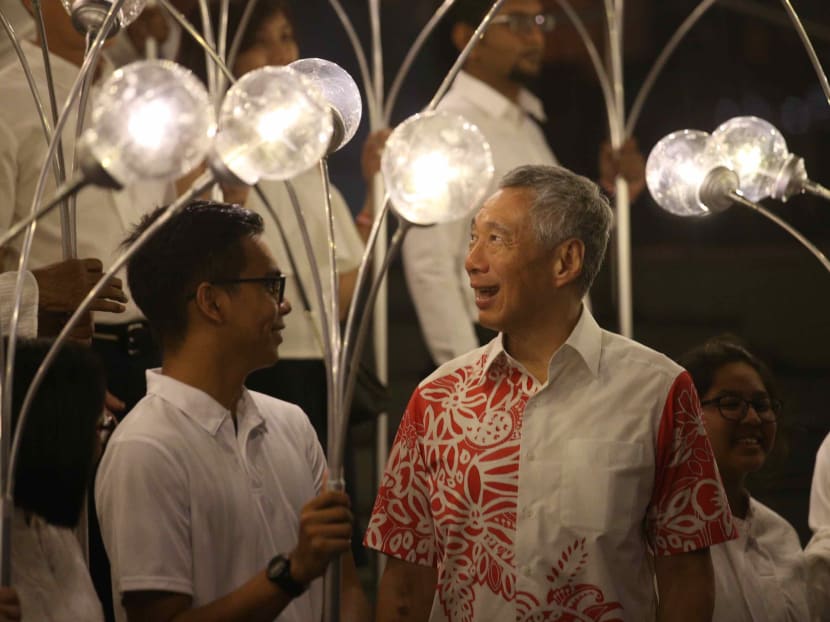Despite rich history before Raffles’ arrival, 1819 was a ‘turning point’ for Singapore: PM Lee
SINGAPORE — Even though Sir Stamford Raffles did not “discover” Singapore in 1819, Prime Minister Lee Hsien Loong said that year still marked the beginning of a “modern, outward-looking and cultural Singapore”.

Speaking at the launch of Singapore’s bicentennial on Monday, Prime Minister Lee Hsien Loong said the 200th year since Raffles landed on the island is “worth commemorating” as the Republic would otherwise not have embarked on its journey to where it is today.
SINGAPORE — Even though Sir Stamford Raffles did not “discover” Singapore in 1819, Prime Minister Lee Hsien Loong said that year still marked the beginning of a “modern, outward-looking and cultural Singapore”.
Speaking at the launch of Singapore’s bicentennial on Monday (Jan 28), Mr Lee said the 200th year since Raffles landed on the island is “worth commemorating” as the Republic would otherwise not have embarked on its journey to where it is today.
“Without 1819, we would not have had 1965, and we would certainly not have celebrated the success of SG50 three years ago,” Mr Lee said.
However, he added that the bicentennial is not just about remembering Raffles or William Farquhar.
Singapore already had hundreds of years of history before these two British men arrived, noted Mr Lee.
He pointed out that Singapore was already a thriving seaport known as Temasek in the 14th century.
Two centuries before Raffles’ arrival, Flemish gem trader Jacques de Coutre proposed to the King of Spain to build a fortress in Singapore.
“Had the King accepted de Coutre’s proposal, Singapore might have become a Spanish colony, instead of a British one,” Mr Lee said.
Still, 1819 was a “crucial turning point”, Mr Lee said, as Raffles’ plans of making Singapore a free port set it on a trajectory leading to where it is today.
“This journey was not a straight and level path, forwards and upwards. ... we fought for independence from our colonial masters. But we also recognise the decisive and indelible imprint that the British left on Singapore — the rule of law, our parliamentary system of government, even the language I am speaking today,” he added.
Various ethnic and cultural groups formed community organisations to help one another through the journey, said Mr Lee, and more than 200 of them would be holding commemorative events throughout the year to highlight the history of their own communities.
One of them is the Chettiars Temple Society, which will be releasing a three-part video series highlighting the history and journey of the Tamil-speaking community.
Dr S Thinnappan, a member of the society and one of the 50 light bearers at the opening act of the launch, said that the Chettiars came to Singapore in the 1830s and set up moneylending businesses, which contributed to the economic development of Singapore during the colonial era and after.
The 84-year-old pointed out that the Chettiars were the ones who introduced the Thaipusam festival to Singapore and other parts of Southeast Asia.
“History is based in the past, but it helps to plan for the future,” said Dr Thinnappan who was explaining the importance of documenting his community's history.
The youngest light bearer at Monday's launch, Kayla Choy, a Primary Six student from St Anthony's Canossian Primary School, said that she feels proud to be representing the younger generation.
Her school will be celebrating its 140th anniversary in conjunction with the bicentennial and will be showcasing a colouring book, a book of essay and artworks, and video containing works by the school's teachers, students and alumni.
Kayla herself wrote an essay about what Singapore means to her, which was placed in a capsule and will be opened 10 years later.











